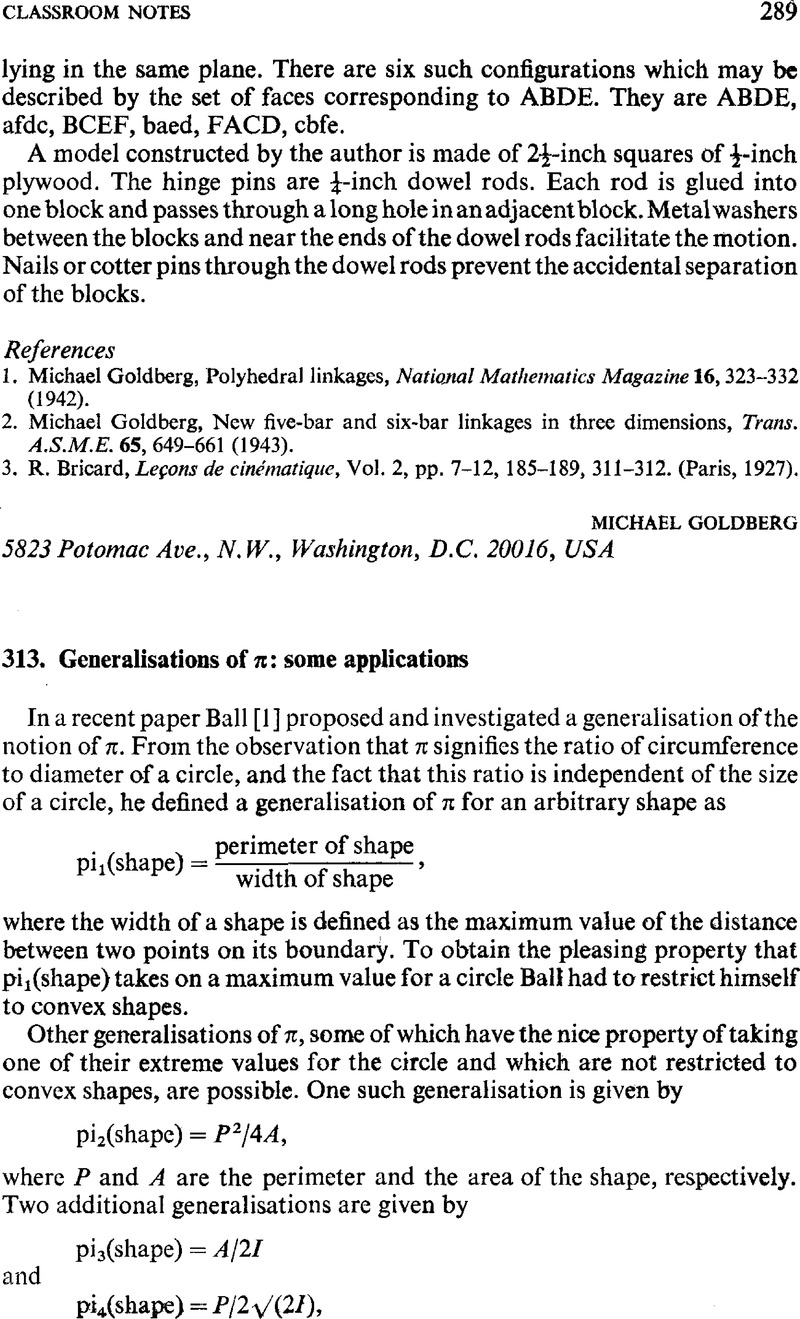No CrossRef data available.
Article contents
313. Generalisations of π: some applications
Published online by Cambridge University Press: 03 November 2016
Abstract
An abstract is not available for this content so a preview has been provided. Please use the Get access link above for information on how to access this content.

Information
- Type
- Classroom notes
- Information
- Copyright
- Copyright © Mathematical Association 1974
References
1.
Ball, D. G., A generalisation of π, Mathl. Gaz.
LVII, 298–302 (No. 402, December 1973).Google Scholar
2.
Attneave, F. and Arnoult, M. D., The quantitative study of shape and pattern perception, Psychological Bulletin
53, 452–471 (1956).CrossRefGoogle Scholar
3.
Duda, R. O. and Hart, P. E., Pattern classification and scene analysis. John Wiley (1973).Google Scholar
4.
Zusne, L., Moments of area and of the perimeter of visual form as predictors of discrimination performance, J. Exp. Psychology
69, 213–220 (1965).Google Scholar
5.
Hofstaetter, P. R., Ueber die Scherzung von Gruppeneigenschaften. Z. Psychol.
145, 1–44 (1939).Google Scholar
7.
Hu, M. K., Visual pattern recognition by moment invariants, I.R.E. Transactions on Information Theory
18, 179–187 (1962).Google Scholar

